2024 Certificates of Achievement
RAHS Affiliated Societies are critical in promoting local and community history. The RAHS Certificates of Achievement honour the wide-ranging contributions made by their members.
Nominated by Australian Catholic Historical Society
James Franklin
 For his dedication and involvement with the Society. Since 2011, James has served as Vice President, sole production editor of the journal and webmaster since 2019. He has contributed to varied Society matters, speakers and talks, and assisted with a successful 2023 Create NSW Cultural Grant for writing the Society’s history. An author of several books and articles on Australian Catholic history and other academic topics, his invaluable ongoing contributions to the Society are appreciated.
For his dedication and involvement with the Society. Since 2011, James has served as Vice President, sole production editor of the journal and webmaster since 2019. He has contributed to varied Society matters, speakers and talks, and assisted with a successful 2023 Create NSW Cultural Grant for writing the Society’s history. An author of several books and articles on Australian Catholic history and other academic topics, his invaluable ongoing contributions to the Society are appreciated.
Nominated by Berrima District Historical and Family History Society
Denyse Barker
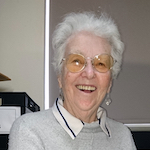 For her commitment and significant contributions to the Society since 2007. As a regular volunteer in the archives, Denyse’s projects have included assisting researchers with enquiries, scanning and cataloguing the Society’s large photographic collection, and being instrumental in making this collection available in the online image library. She has served on the Management Committee since 2010 and is currently Minutes Secretary.
For her commitment and significant contributions to the Society since 2007. As a regular volunteer in the archives, Denyse’s projects have included assisting researchers with enquiries, scanning and cataloguing the Society’s large photographic collection, and being instrumental in making this collection available in the online image library. She has served on the Management Committee since 2010 and is currently Minutes Secretary.
Patricia Doris
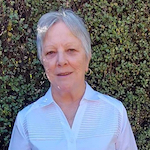 For her commitment and service since 2011. Using her administrative skills, Patricia has served on the Management Committee since 2013, Treasurer for ten years and Secretary since 2023. She is involved with the archives and museum and has administered several large grants for building and development projects awarded to the Society. The Society acknowledges Patricia’s significant contributions throughout the years.
For her commitment and service since 2011. Using her administrative skills, Patricia has served on the Management Committee since 2013, Treasurer for ten years and Secretary since 2023. She is involved with the archives and museum and has administered several large grants for building and development projects awarded to the Society. The Society acknowledges Patricia’s significant contributions throughout the years.
Ian Mackey
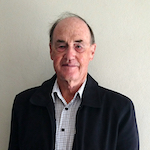 For his significant contributions to the Society for over 18 years. Ian has had active roles in the archives, museum and Society activities. As President from 2017–2023, he was involved in negotiations with the local council to secure tenancy of the building that houses the Society’s archives in Mittagong. The Society and the community recognise and appreciate Ian’s worthwhile voluntary contributions.
For his significant contributions to the Society for over 18 years. Ian has had active roles in the archives, museum and Society activities. As President from 2017–2023, he was involved in negotiations with the local council to secure tenancy of the building that houses the Society’s archives in Mittagong. The Society and the community recognise and appreciate Ian’s worthwhile voluntary contributions.
Nominated by City of Liverpool and District Historical Society
Glen op den Brouw
 For his energetic leadership as President for nine years. Glen’s passion for local history stimulated his quest to obtain suitable premises for the Society and its collections. After decades of homelessness, with collections in storage and nowhere for members to meet, he was able to negotiate with the local council for a permanent home in the former Senior Citizen’s Centre. The Society recognises his continuous dedication and passion.
For his energetic leadership as President for nine years. Glen’s passion for local history stimulated his quest to obtain suitable premises for the Society and its collections. After decades of homelessness, with collections in storage and nowhere for members to meet, he was able to negotiate with the local council for a permanent home in the former Senior Citizen’s Centre. The Society recognises his continuous dedication and passion.
Nominated by Marrickville Heritage Society
Ian Tyrrell
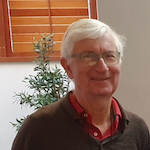 For his many contributions to the built and environmental heritage of Marrickville. Ian was a founding member of the Society in 1984 and is currently a Committee Member. Through his research, publications, talks and tours, he has been a strong advocate for the local heritage and environment of the Marrickville and Cooks River area. The Society and the community recognise and appreciate Ian’s worthwhile contributions.
For his many contributions to the built and environmental heritage of Marrickville. Ian was a founding member of the Society in 1984 and is currently a Committee Member. Through his research, publications, talks and tours, he has been a strong advocate for the local heritage and environment of the Marrickville and Cooks River area. The Society and the community recognise and appreciate Ian’s worthwhile contributions.
Nominated by Parramatta and District Historical Society
Bruce Gregory
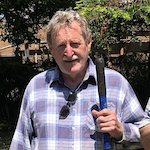 For his contributions to the Society since 2017 as an active volunteer. Since 2018, he has served as a Councillor, is involved as a Committee Member with the maintenance and gardens of Hambledon Cottage, and is an active school guide for the museum, becoming Convenor of the Gardening Committee in 2023. Bruce was awarded a Certificate of Merit in 2022 for his service to the Society and Hambledon Cottage. The Society recognises and appreciates his contribution and dedication.
For his contributions to the Society since 2017 as an active volunteer. Since 2018, he has served as a Councillor, is involved as a Committee Member with the maintenance and gardens of Hambledon Cottage, and is an active school guide for the museum, becoming Convenor of the Gardening Committee in 2023. Bruce was awarded a Certificate of Merit in 2022 for his service to the Society and Hambledon Cottage. The Society recognises and appreciates his contribution and dedication.
Verne Tuckwell
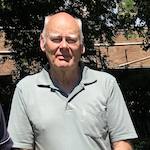 For his commitment and voluntary service to the Society since 2003. Verne’s activities include installing and managing the security services at Hambledon Cottage, undertaking many night callouts, and being involved with the maintenance and gardening at the museum since 2015. He was awarded a Certificate of Merit in 2016 for his service and contributions to the Society. The Society and the community recognise and appreciate Verne’s loyalty and worthwhile contributions over the past decade.
For his commitment and voluntary service to the Society since 2003. Verne’s activities include installing and managing the security services at Hambledon Cottage, undertaking many night callouts, and being involved with the maintenance and gardening at the museum since 2015. He was awarded a Certificate of Merit in 2016 for his service and contributions to the Society. The Society and the community recognise and appreciate Verne’s loyalty and worthwhile contributions over the past decade.
Nominated by Port Macquarie Historical Society
Clive Smith
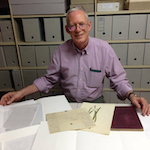 For inspirational leadership in the management and development of the Society and outstanding management of the archives and photograph collection since 2013. Clive’s careful research and archival skills supported the successful nomination of the Annabella Boswell Papers for inscription to the UNESCO Memory of the World Register. As a researcher and author, he has mentored members while his publications have been recognised as significant contributions to local and Australian history.
For inspirational leadership in the management and development of the Society and outstanding management of the archives and photograph collection since 2013. Clive’s careful research and archival skills supported the successful nomination of the Annabella Boswell Papers for inscription to the UNESCO Memory of the World Register. As a researcher and author, he has mentored members while his publications have been recognised as significant contributions to local and Australian history.
Nominated by Ryde District Historical Society
Kim Phillips
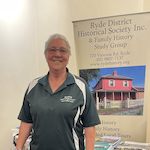 For her outstanding commitment to the Society since 2010. As well as holding many Committee positions, including President and Treasurer, in 2016, Kim initiated digital technologies to make the Society’s collections more accessible. She has designed and assisted with the production of Society publications, liaised with local community groups, supported open days and research meetings, and mentored intern students. The Society acknowledges Kim’s significant contributions throughout the years.
For her outstanding commitment to the Society since 2010. As well as holding many Committee positions, including President and Treasurer, in 2016, Kim initiated digital technologies to make the Society’s collections more accessible. She has designed and assisted with the production of Society publications, liaised with local community groups, supported open days and research meetings, and mentored intern students. The Society acknowledges Kim’s significant contributions throughout the years.
Nominated by Shoalhaven Historical Society
Tim Rigney
 For his commitment and service to the Society since 2010. Tim has served as Secretary since 2012 and Treasurer since 2021. He created and administers the Society’s new website, online bookshop, and data entry programs, resolves technology issues, publishes the newsletter, and is the editor of the quarterly journal. Tim assists with maintaining the Society’s exhibits and grounds and is proactive in recruiting volunteers, organising duty rosters and undertaking grant applications. The Society and Nowra Museum appreciate his invaluable contributions.
For his commitment and service to the Society since 2010. Tim has served as Secretary since 2012 and Treasurer since 2021. He created and administers the Society’s new website, online bookshop, and data entry programs, resolves technology issues, publishes the newsletter, and is the editor of the quarterly journal. Tim assists with maintaining the Society’s exhibits and grounds and is proactive in recruiting volunteers, organising duty rosters and undertaking grant applications. The Society and Nowra Museum appreciate his invaluable contributions.
Nominated by The Oaks Historical Society
Doreen Lyon
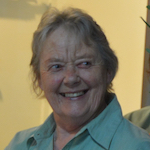 For her contribution to the Society as a charter member and exhibition curator of the museum since 1988. Her background in graphic design, constantly updated over the years, has produced stimulating exhibitions that showcase Wollondilly Shire’s history. As a mentor to other members, she is ensuring that this will continue. Doreen’s voluntary service to the community for 36 years is appreciated and recognised by the Society.
For her contribution to the Society as a charter member and exhibition curator of the museum since 1988. Her background in graphic design, constantly updated over the years, has produced stimulating exhibitions that showcase Wollondilly Shire’s history. As a mentor to other members, she is ensuring that this will continue. Doreen’s voluntary service to the community for 36 years is appreciated and recognised by the Society.
2024 Certificate of Appreciation
The RAHS Certificate of Appreciation honours the contribution made by RAHS volunteers.
Lynne Allen
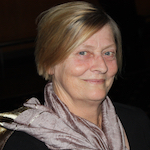 Lynne joined the RAHS and served as a RAHS Councillor from 2013–2024. As an enthusiastic and invaluable Chair of the RAHS Affiliated Societies Committee (ASC) from 2014, she brought her practical insight from her work as President of the Shoalhaven Historical Society and the Shoalhaven Family History Society to inform our programmes for affiliates. In the past year since she ceased being a RAHS Councillor, Lynne has continued her work with the ASC and in the organisation of the 2024 RAHS Conference. This certificate honours her work with the ASC.
Lynne joined the RAHS and served as a RAHS Councillor from 2013–2024. As an enthusiastic and invaluable Chair of the RAHS Affiliated Societies Committee (ASC) from 2014, she brought her practical insight from her work as President of the Shoalhaven Historical Society and the Shoalhaven Family History Society to inform our programmes for affiliates. In the past year since she ceased being a RAHS Councillor, Lynne has continued her work with the ASC and in the organisation of the 2024 RAHS Conference. This certificate honours her work with the ASC.
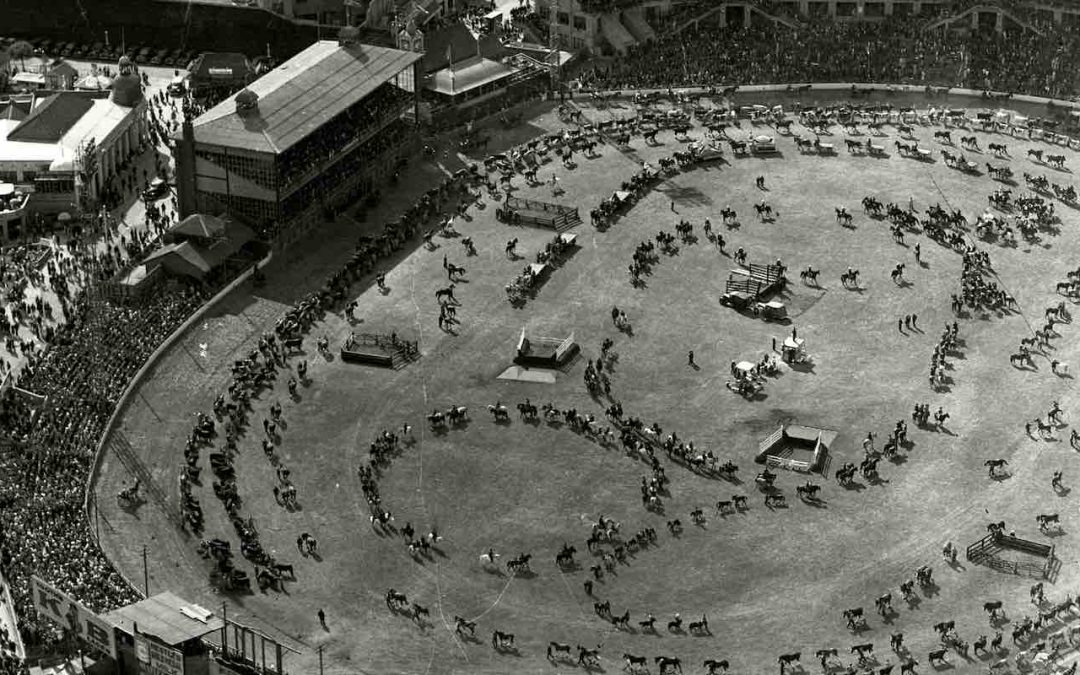

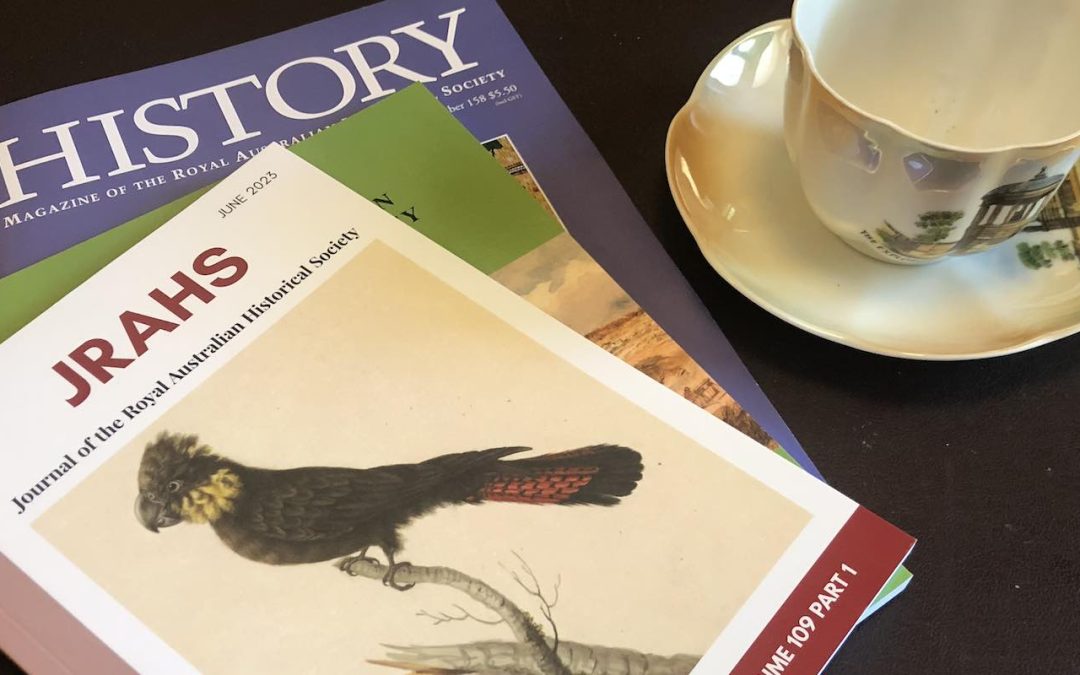


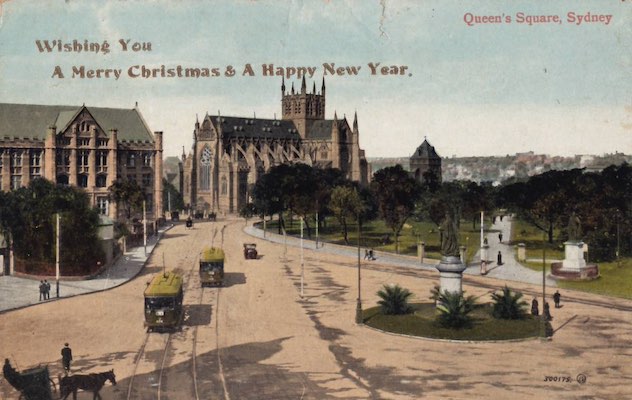
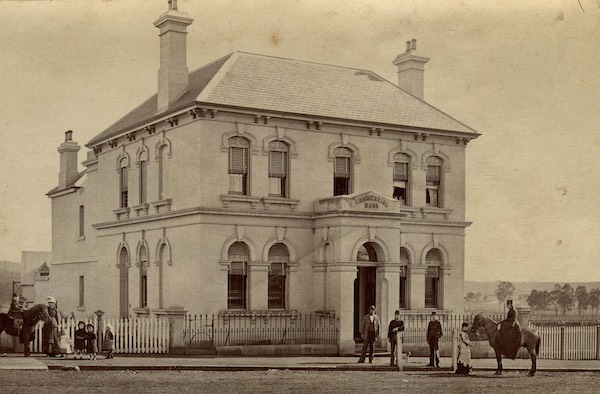
 For his dedication and involvement with the Society. Since 2011, James has served as Vice President, sole production editor of the journal and webmaster since 2019. He has contributed to varied Society matters, speakers and talks, and assisted with a successful 2023 Create NSW Cultural Grant for writing the Society’s history. An author of several books and articles on Australian Catholic history and other academic topics, his invaluable ongoing contributions to the Society are appreciated.
For his dedication and involvement with the Society. Since 2011, James has served as Vice President, sole production editor of the journal and webmaster since 2019. He has contributed to varied Society matters, speakers and talks, and assisted with a successful 2023 Create NSW Cultural Grant for writing the Society’s history. An author of several books and articles on Australian Catholic history and other academic topics, his invaluable ongoing contributions to the Society are appreciated. For her commitment and significant contributions to the Society since 2007. As a regular volunteer in the archives, Denyse’s projects have included assisting researchers with enquiries, scanning and cataloguing the Society’s large photographic collection, and being instrumental in making this collection available in the online image library. She has served on the Management Committee since 2010 and is currently Minutes Secretary.
For her commitment and significant contributions to the Society since 2007. As a regular volunteer in the archives, Denyse’s projects have included assisting researchers with enquiries, scanning and cataloguing the Society’s large photographic collection, and being instrumental in making this collection available in the online image library. She has served on the Management Committee since 2010 and is currently Minutes Secretary. For her commitment and service since 2011. Using her administrative skills, Patricia has served on the Management Committee since 2013, Treasurer for ten years and Secretary since 2023. She is involved with the archives and museum and has administered several large grants for building and development projects awarded to the Society. The Society acknowledges Patricia’s significant contributions throughout the years.
For her commitment and service since 2011. Using her administrative skills, Patricia has served on the Management Committee since 2013, Treasurer for ten years and Secretary since 2023. She is involved with the archives and museum and has administered several large grants for building and development projects awarded to the Society. The Society acknowledges Patricia’s significant contributions throughout the years. For his significant contributions to the Society for over 18 years. Ian has had active roles in the archives, museum and Society activities. As President from 2017–2023, he was involved in negotiations with the local council to secure tenancy of the building that houses the Society’s archives in Mittagong. The Society and the community recognise and appreciate Ian’s worthwhile voluntary contributions.
For his significant contributions to the Society for over 18 years. Ian has had active roles in the archives, museum and Society activities. As President from 2017–2023, he was involved in negotiations with the local council to secure tenancy of the building that houses the Society’s archives in Mittagong. The Society and the community recognise and appreciate Ian’s worthwhile voluntary contributions. For his energetic leadership as President for nine years. Glen’s passion for local history stimulated his quest to obtain suitable premises for the Society and its collections. After decades of homelessness, with collections in storage and nowhere for members to meet, he was able to negotiate with the local council for a permanent home in the former Senior Citizen’s Centre. The Society recognises his continuous dedication and passion.
For his energetic leadership as President for nine years. Glen’s passion for local history stimulated his quest to obtain suitable premises for the Society and its collections. After decades of homelessness, with collections in storage and nowhere for members to meet, he was able to negotiate with the local council for a permanent home in the former Senior Citizen’s Centre. The Society recognises his continuous dedication and passion. For his many contributions to the built and environmental heritage of Marrickville. Ian was a founding member of the Society in 1984 and is currently a Committee Member. Through his research, publications, talks and tours, he has been a strong advocate for the local heritage and environment of the Marrickville and Cooks River area. The Society and the community recognise and appreciate Ian’s worthwhile contributions.
For his many contributions to the built and environmental heritage of Marrickville. Ian was a founding member of the Society in 1984 and is currently a Committee Member. Through his research, publications, talks and tours, he has been a strong advocate for the local heritage and environment of the Marrickville and Cooks River area. The Society and the community recognise and appreciate Ian’s worthwhile contributions. For his contributions to the Society since 2017 as an active volunteer. Since 2018, he has served as a Councillor, is involved as a Committee Member with the maintenance and gardens of Hambledon Cottage, and is an active school guide for the museum, becoming Convenor of the Gardening Committee in 2023. Bruce was awarded a Certificate of Merit in 2022 for his service to the Society and Hambledon Cottage. The Society recognises and appreciates his contribution and dedication.
For his contributions to the Society since 2017 as an active volunteer. Since 2018, he has served as a Councillor, is involved as a Committee Member with the maintenance and gardens of Hambledon Cottage, and is an active school guide for the museum, becoming Convenor of the Gardening Committee in 2023. Bruce was awarded a Certificate of Merit in 2022 for his service to the Society and Hambledon Cottage. The Society recognises and appreciates his contribution and dedication. For his commitment and voluntary service to the Society since 2003. Verne’s activities include installing and managing the security services at Hambledon Cottage, undertaking many night callouts, and being involved with the maintenance and gardening at the museum since 2015. He was awarded a Certificate of Merit in 2016 for his service and contributions to the Society. The Society and the community recognise and appreciate Verne’s loyalty and worthwhile contributions over the past decade.
For his commitment and voluntary service to the Society since 2003. Verne’s activities include installing and managing the security services at Hambledon Cottage, undertaking many night callouts, and being involved with the maintenance and gardening at the museum since 2015. He was awarded a Certificate of Merit in 2016 for his service and contributions to the Society. The Society and the community recognise and appreciate Verne’s loyalty and worthwhile contributions over the past decade. For inspirational leadership in the management and development of the Society and outstanding management of the archives and photograph collection since 2013. Clive’s careful research and archival skills supported the successful nomination of the
For inspirational leadership in the management and development of the Society and outstanding management of the archives and photograph collection since 2013. Clive’s careful research and archival skills supported the successful nomination of the  For her outstanding commitment to the Society since 2010. As well as holding many Committee positions, including President and Treasurer, in 2016, Kim initiated digital technologies to make the Society’s collections more accessible. She has designed and assisted with the production of Society publications, liaised with local community groups, supported open days and research meetings, and mentored intern students. The Society acknowledges Kim’s significant contributions throughout the years.
For her outstanding commitment to the Society since 2010. As well as holding many Committee positions, including President and Treasurer, in 2016, Kim initiated digital technologies to make the Society’s collections more accessible. She has designed and assisted with the production of Society publications, liaised with local community groups, supported open days and research meetings, and mentored intern students. The Society acknowledges Kim’s significant contributions throughout the years. For his commitment and service to the Society since 2010. Tim has served as Secretary since 2012 and Treasurer since 2021. He created and administers the Society’s new website, online bookshop, and data entry programs, resolves technology issues, publishes the newsletter, and is the editor of the quarterly journal. Tim assists with maintaining the Society’s exhibits and grounds and is proactive in recruiting volunteers, organising duty rosters and undertaking grant applications. The Society and Nowra Museum appreciate his invaluable contributions.
For his commitment and service to the Society since 2010. Tim has served as Secretary since 2012 and Treasurer since 2021. He created and administers the Society’s new website, online bookshop, and data entry programs, resolves technology issues, publishes the newsletter, and is the editor of the quarterly journal. Tim assists with maintaining the Society’s exhibits and grounds and is proactive in recruiting volunteers, organising duty rosters and undertaking grant applications. The Society and Nowra Museum appreciate his invaluable contributions. For her contribution to the Society as a charter member and exhibition curator of the museum since 1988. Her background in graphic design, constantly updated over the years, has produced stimulating exhibitions that showcase Wollondilly Shire’s history. As a mentor to other members, she is ensuring that this will continue. Doreen’s voluntary service to the community for 36 years is appreciated and recognised by the Society.
For her contribution to the Society as a charter member and exhibition curator of the museum since 1988. Her background in graphic design, constantly updated over the years, has produced stimulating exhibitions that showcase Wollondilly Shire’s history. As a mentor to other members, she is ensuring that this will continue. Doreen’s voluntary service to the community for 36 years is appreciated and recognised by the Society. Lynne joined the RAHS and served as a RAHS Councillor from 2013–2024. As an enthusiastic and invaluable Chair of the RAHS Affiliated Societies Committee (ASC) from 2014, she brought her practical insight from her work as President of the Shoalhaven Historical Society and the Shoalhaven Family History Society to inform our programmes for affiliates. In the past year since she ceased being a RAHS Councillor, Lynne has continued her work with the ASC and in the organisation of the 2024 RAHS Conference. This certificate honours her work with the ASC.
Lynne joined the RAHS and served as a RAHS Councillor from 2013–2024. As an enthusiastic and invaluable Chair of the RAHS Affiliated Societies Committee (ASC) from 2014, she brought her practical insight from her work as President of the Shoalhaven Historical Society and the Shoalhaven Family History Society to inform our programmes for affiliates. In the past year since she ceased being a RAHS Councillor, Lynne has continued her work with the ASC and in the organisation of the 2024 RAHS Conference. This certificate honours her work with the ASC.
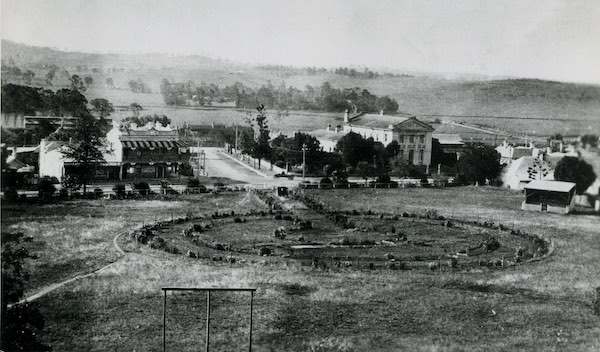
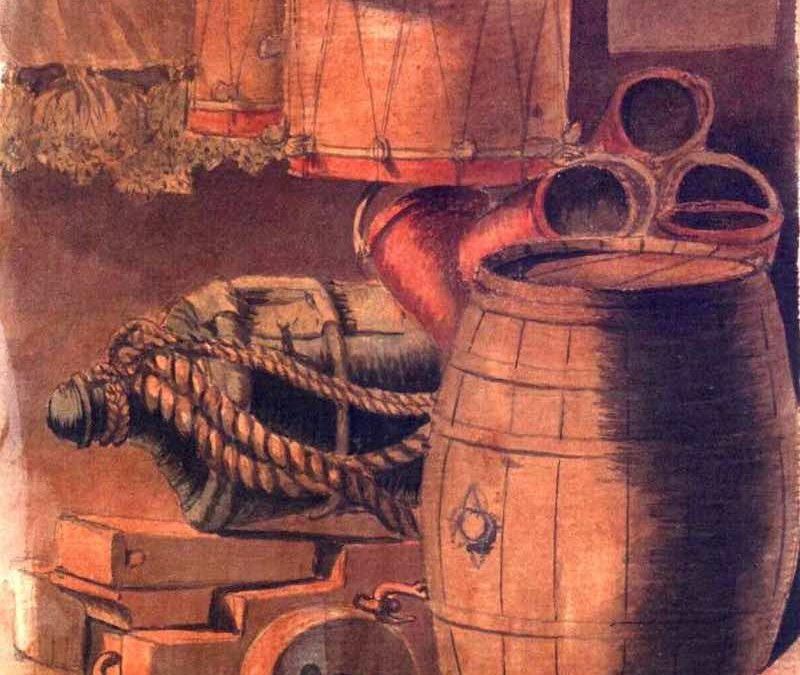
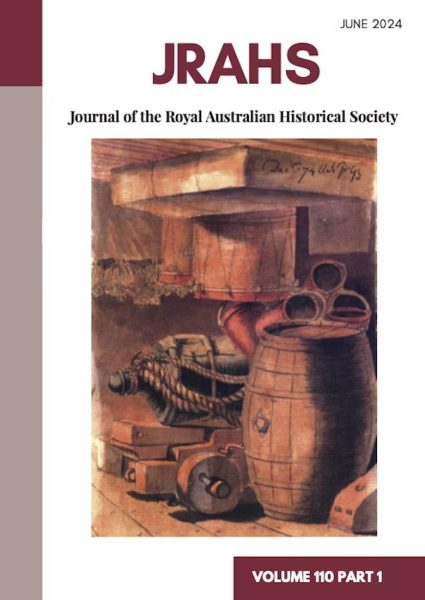
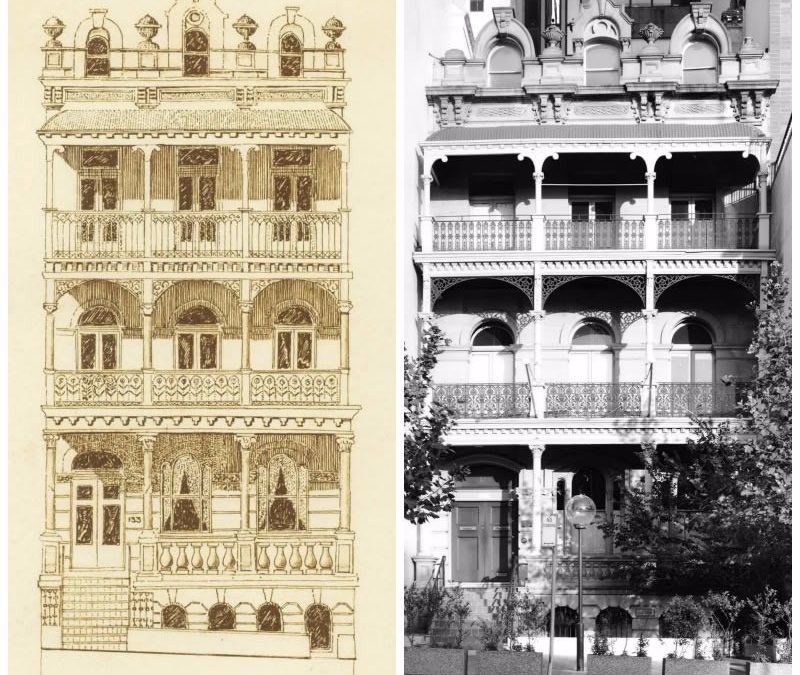
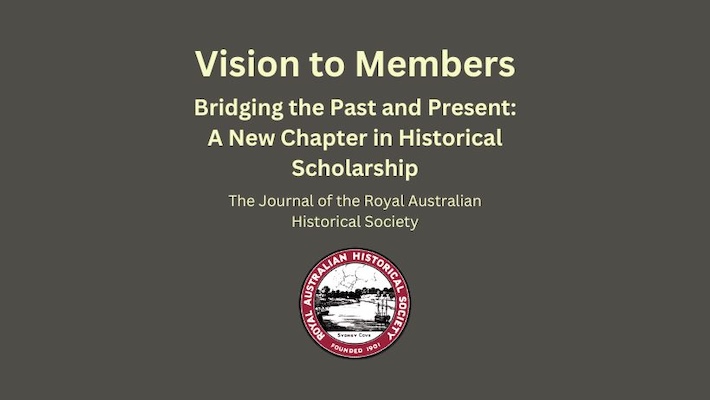
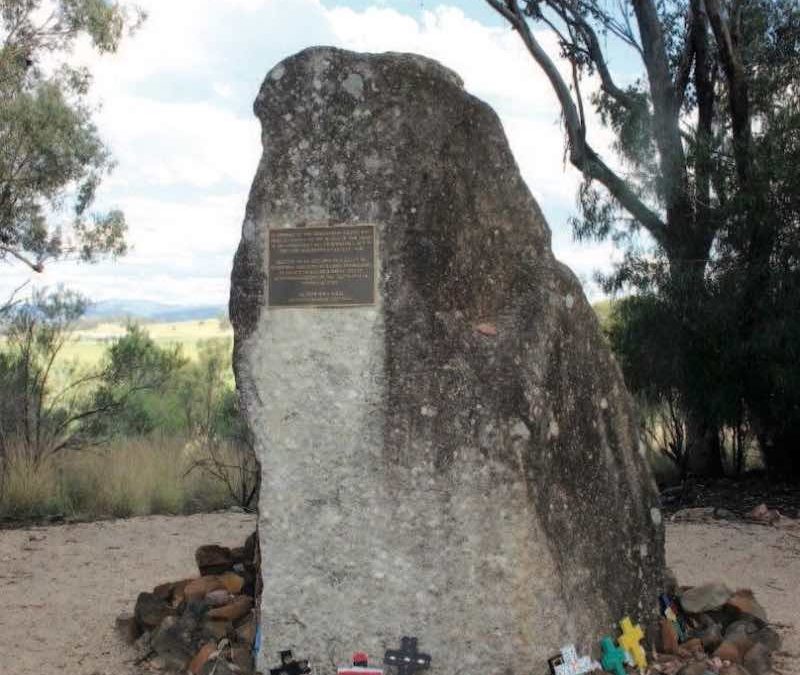
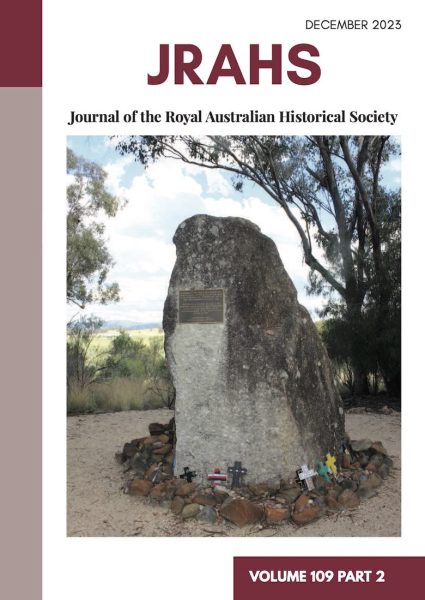
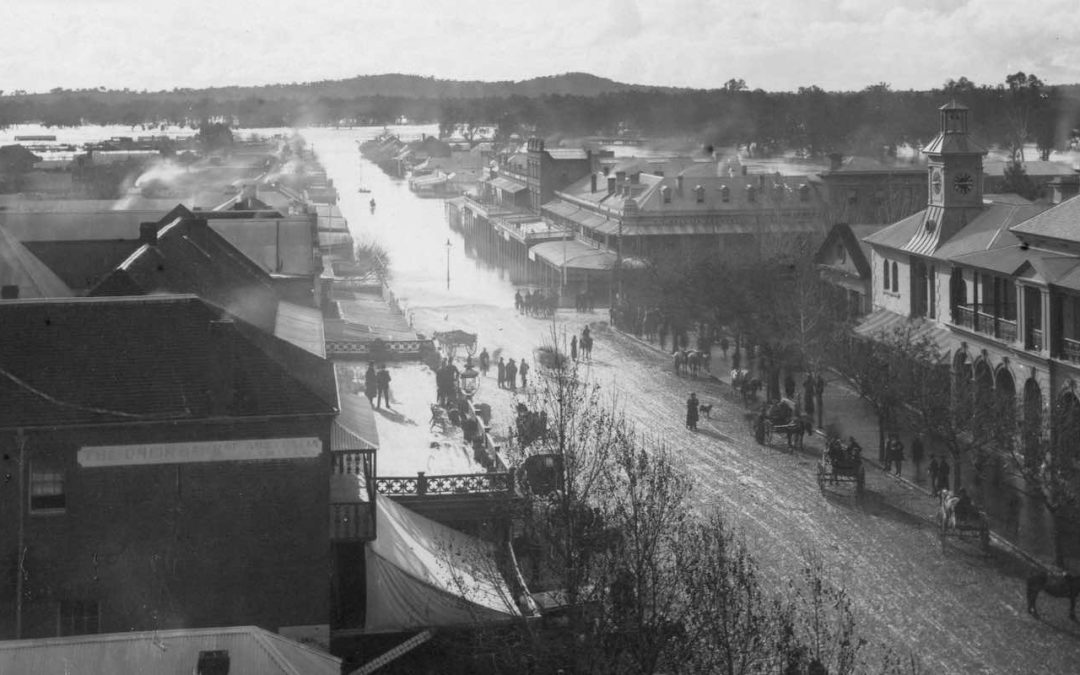
 For his commitment and service since 2003. Murray has served as Membership Officer and Secretary since 2020. Through his generosity and dedication, Murray has raised significant funds by selling, collecting and recycling discarded and donated items. His attendance, advocacy, and support for the museum, its committee, and its members have inspired everyone within the Society. The Society acknowledges and appreciates Murray’s continuous and selfless contributions and dedicated service.
For his commitment and service since 2003. Murray has served as Membership Officer and Secretary since 2020. Through his generosity and dedication, Murray has raised significant funds by selling, collecting and recycling discarded and donated items. His attendance, advocacy, and support for the museum, its committee, and its members have inspired everyone within the Society. The Society acknowledges and appreciates Murray’s continuous and selfless contributions and dedicated service. For her commitment and service since 2018. In 2020, Sarah was elected to the committee and appointed Publicity Officer. She manages the Society’s social media and, as part of a sub-committee, recently upgraded the website and oversees its ongoing maintenance. Her recent publication, 75 Treasures: Celebrating 75 years of the Bathurst District Historical Society, has been well received by local historians. The Society’s members appreciate Sarah’s invaluable and worthwhile contributions.
For her commitment and service since 2018. In 2020, Sarah was elected to the committee and appointed Publicity Officer. She manages the Society’s social media and, as part of a sub-committee, recently upgraded the website and oversees its ongoing maintenance. Her recent publication, 75 Treasures: Celebrating 75 years of the Bathurst District Historical Society, has been well received by local historians. The Society’s members appreciate Sarah’s invaluable and worthwhile contributions.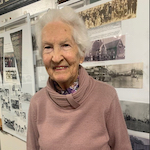 For her commitment and service since 2003. Marnie has served as Secretary since 2005 and organises events and activities. She is involved with the recording and cataloguing of the museum collection. Her displays in the museum and support for fundraising events have always been appreciated. Marnie’s caring involvement also extends to her local community. The Museum acknowledges Marnie’s longstanding participation and enthusiasm throughout the years.
For her commitment and service since 2003. Marnie has served as Secretary since 2005 and organises events and activities. She is involved with the recording and cataloguing of the museum collection. Her displays in the museum and support for fundraising events have always been appreciated. Marnie’s caring involvement also extends to her local community. The Museum acknowledges Marnie’s longstanding participation and enthusiasm throughout the years.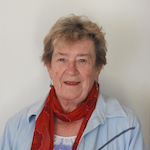 For her commitment, enthusiasm and outstanding service to the Society and its museum since 2006. Sylvia’s tasks since 2007 have included preparing volunteer rosters, training volunteers and maintaining the museum’s grounds and gardens. As a sub-committee member, she performs counter duties and museum cleaning and assists with group bookings and functions. The Society recognises Sylvia’s significant contributions, local knowledge and cheerful manner.
For her commitment, enthusiasm and outstanding service to the Society and its museum since 2006. Sylvia’s tasks since 2007 have included preparing volunteer rosters, training volunteers and maintaining the museum’s grounds and gardens. As a sub-committee member, she performs counter duties and museum cleaning and assists with group bookings and functions. The Society recognises Sylvia’s significant contributions, local knowledge and cheerful manner.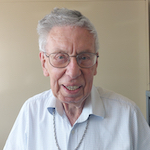 For his commitment and contributions since 2010. John currently serves as Museum Manager, attending to the archives and museum, arranging group bookings, functions and promotions, and welcoming visitors. His many hours supporting the Society and other volunteers, instructing new members, having reliable attendance, and being able to sort out problems with a good sense of humour and patience are well received. He is passionate about passing on Berrima’s history to all visitors. John’s tireless efforts and dedication are worthy of the Society’s recognition and praise.
For his commitment and contributions since 2010. John currently serves as Museum Manager, attending to the archives and museum, arranging group bookings, functions and promotions, and welcoming visitors. His many hours supporting the Society and other volunteers, instructing new members, having reliable attendance, and being able to sort out problems with a good sense of humour and patience are well received. He is passionate about passing on Berrima’s history to all visitors. John’s tireless efforts and dedication are worthy of the Society’s recognition and praise.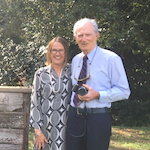 For his commitment and service since 2001. Peter’s research into Greek heritage in the Northern Rivers region of New South Wales has resulted in a website and two publications. Peter has also written on the history of Mullumbimby for the Society. Since 2010, he has written and compiled the Society’s newsletter and researched relevant local information. Peter has also assisted in maintaining and conserving the Society’s exhibits and park grounds and helped with the clean-up after the 2022 floods. The Society and the community recognise and appreciate Peter’s worthwhile contributions.
For his commitment and service since 2001. Peter’s research into Greek heritage in the Northern Rivers region of New South Wales has resulted in a website and two publications. Peter has also written on the history of Mullumbimby for the Society. Since 2010, he has written and compiled the Society’s newsletter and researched relevant local information. Peter has also assisted in maintaining and conserving the Society’s exhibits and park grounds and helped with the clean-up after the 2022 floods. The Society and the community recognise and appreciate Peter’s worthwhile contributions.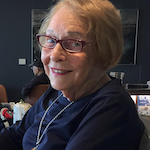 For her longstanding commitment and service since joining COSHA as a foundation member in 2000. Currently in her nineteenth year as President, Beverley has also served as Treasurer, General Secretary and Minutes Secretary. She organises the events, liaises with the presenters, maintains the website and social media, and chairs the monthly meetings. The Association acknowledges Beverley’s invaluable work and outstanding achievements. Her diligence and ethical management in these roles, and with assistance from members of its executive team, have ensured COSHA’s continuing success.
For her longstanding commitment and service since joining COSHA as a foundation member in 2000. Currently in her nineteenth year as President, Beverley has also served as Treasurer, General Secretary and Minutes Secretary. She organises the events, liaises with the presenters, maintains the website and social media, and chairs the monthly meetings. The Association acknowledges Beverley’s invaluable work and outstanding achievements. Her diligence and ethical management in these roles, and with assistance from members of its executive team, have ensured COSHA’s continuing success. For his invaluable contributions over two decades with COSHA. John served as Newsletter Editor from 2007 to 2019 and as Treasurer and Membership Officer for the last four years. He continues to organise the printing and distribution of the newsletter. His commitment to members ensured they received their newsletter, their main form of interaction and communication during the lockdown restrictions of 2020–2021. John’s monitoring and management of finances and memberships are invaluable to the Association’s continuing success.
For his invaluable contributions over two decades with COSHA. John served as Newsletter Editor from 2007 to 2019 and as Treasurer and Membership Officer for the last four years. He continues to organise the printing and distribution of the newsletter. His commitment to members ensured they received their newsletter, their main form of interaction and communication during the lockdown restrictions of 2020–2021. John’s monitoring and management of finances and memberships are invaluable to the Association’s continuing success.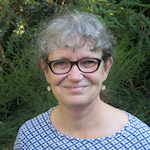 For her commitment and service since 2018. Sue is a researcher, script editor, historian and speaker. She has volunteered for the Addison Road Community Organisation and has worked with the Addison Road Army Depot veterans. Sue’s published work has contributed to the history of Sydney and the Marrickville area. An ardent supporter of local and state libraries and archives, she has been vocal and proactive in lobbying for improved and accessible local study resources. The Society acknowledges Sue’s work as a promoter of local history.
For her commitment and service since 2018. Sue is a researcher, script editor, historian and speaker. She has volunteered for the Addison Road Community Organisation and has worked with the Addison Road Army Depot veterans. Sue’s published work has contributed to the history of Sydney and the Marrickville area. An ardent supporter of local and state libraries and archives, she has been vocal and proactive in lobbying for improved and accessible local study resources. The Society acknowledges Sue’s work as a promoter of local history.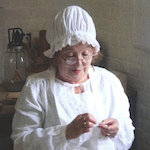 For her commitment and service since 2014. Ronda’s contributions include guiding tours and presenting talks to members and other heritage groups. Since 2015, she worked as a Hambledon Cottage Guide and is involved with the Parramatta Female Factory Friends, serving as Secretary, Editor and Publicity Officer. Ronda has also been a Parramatta Heritage Partners Secretary since 2017. The Society recognises Ronda’s dedication to local and community history.
For her commitment and service since 2014. Ronda’s contributions include guiding tours and presenting talks to members and other heritage groups. Since 2015, she worked as a Hambledon Cottage Guide and is involved with the Parramatta Female Factory Friends, serving as Secretary, Editor and Publicity Officer. Ronda has also been a Parramatta Heritage Partners Secretary since 2017. The Society recognises Ronda’s dedication to local and community history.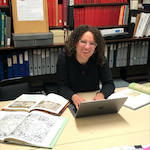 For her contribution to the RAHS website and for supporting RAHS operational activities. Jessica initially joined the RAHS as a Macquarie University intern. She worked with RAHS staff and Councillors to deliver the website
For her contribution to the RAHS website and for supporting RAHS operational activities. Jessica initially joined the RAHS as a Macquarie University intern. She worked with RAHS staff and Councillors to deliver the website